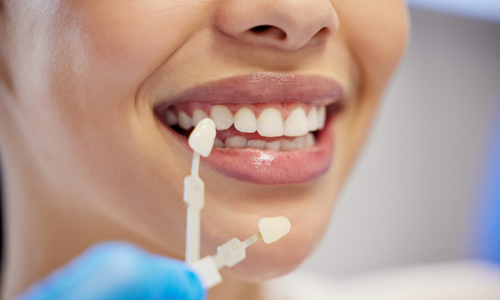Your smile is the most natural signature of your personality. It builds confidence in social interactions and allows you to express yourself more freely and comfortably. However, over time, changes in tooth color, misalignment, gum irregularities, or wear and tear on the teeth can negatively affect your smile’s aesthetic. In such cases, smile design—one of the most comprehensive procedures in aesthetic dentistry—offers a powerful solution to enhance both your appearance and your quality of life.
What Is Smile Design?
Smile design is a comprehensive dental treatment that considers various aesthetic elements such as the shape, color, size, and alignment of the teeth, as well as gum level, to create a custom smile that fits the individual's facial structure and aesthetic goals. The aim is not just white and straight teeth but a healthy, natural, and facially harmonious smile.
Why Should Smile Design Be Personalized?
Just as no two faces are the same, no two smiles are identical. That’s why personalization is key in smile design. Elements such as tooth shape, lip contour, jaw structure, and smile line, along with the desired emotional expression a person wishes to convey through their smile, all play a role in shaping the final design.
The human face is not perfectly symmetrical. For instance, when barbers cut hair or beards, they evaluate each side of the face separately. The same applies in smile design—one side of your smile may lift higher than the other, or the teeth on one side may be shorter due to chewing habits. You may want your upper front teeth to be more prominent or the lateral teeth to appear less visible. In short, your smile is as unique as your face. Therefore, smile design is not a one-size-fits-all dental procedure.
Who Is Smile Design Suitable For?
Smile design is an ideal solution for individuals experiencing:
-
Tooth discoloration, yellowing, or surface stains
-
Chipped, cracked, worn, or misshapen teeth
-
Crowded, spaced, or misaligned teeth
-
Excessive gum display (gummy smile) or uneven gum levels
-
A desire for a younger, more symmetrical, and striking smile
Aesthetic Elements Considered in Smile Design
Tooth Color and Shape: Tooth color is fundamental to smile aesthetics. In smile design, natural whiteness is targeted based on skin tone, lip shape, and facial proportions. Tooth shape is also adapted to the facial structure:
-
Softer-edged teeth for oval faces
-
Sharper, more masculine forms for angular faces
-
Shorter, wider teeth for long faces
Gum Aesthetics (Pink Aesthetics): Gums should be healthy, symmetrical, and proportional to the teeth. Issues like excess gum display, recession, or asymmetry are corrected using laser or microsurgical techniques.
Facial Features and Lip Harmony: The thickness and movement of the lips during a smile and the visibility of the teeth are analyzed. Smile design also considers surrounding soft tissues like lips and cheeks.
Golden Ratio Principle: To achieve aesthetic harmony, the width-to-height ratios of the teeth are planned according to the golden ratio in relation to each other and the face, ensuring a natural and balanced result.
How Does the Smile Design Process Work?
-
Initial Consultation & Expectation Analysis: The patient’s needs and expectations are discussed in detail. The dentist performs an oral examination and evaluates the teeth, gums, and jaw structure. If necessary, preliminary treatments such as gum therapy or cavity restoration are completed.
-
Digital Smile Analysis: Facial and smile analysis is conducted using photos and videos. Digital simulations are created to preview the expected post-treatment outcome.
-
3D Scanning & Measurements: Instead of traditional impressions, digital scanners are used to collect highly accurate data that forms the foundation for the treatment plan.
-
Mock-Up Preview: A temporary model is placed in the patient’s mouth before treatment begins, offering a preview of the final result and allowing the patient to provide feedback.
-
Customized Treatment & Application: Once the design is approved, the necessary aesthetic procedures are performed. The entire process may take a few days to a few weeks, depending on the case.
What Are the Benefits of Smile Design?
-
A natural, harmonious, and aesthetically pleasing smile that complements your facial features
-
Perfectly enhanced teeth in terms of color, shape, and alignment
-
Increased confidence and comfort in social settings
-
Functionally improved chewing and speaking abilities
If you're looking for a younger, more natural, and eye-catching smile, smile design is a personalized, carefully planned, and scientifically grounded approach that delivers long-lasting aesthetic results.
Remember, every facial expression is unique. The most important step toward finding the smile that suits you best is expert evaluation.








